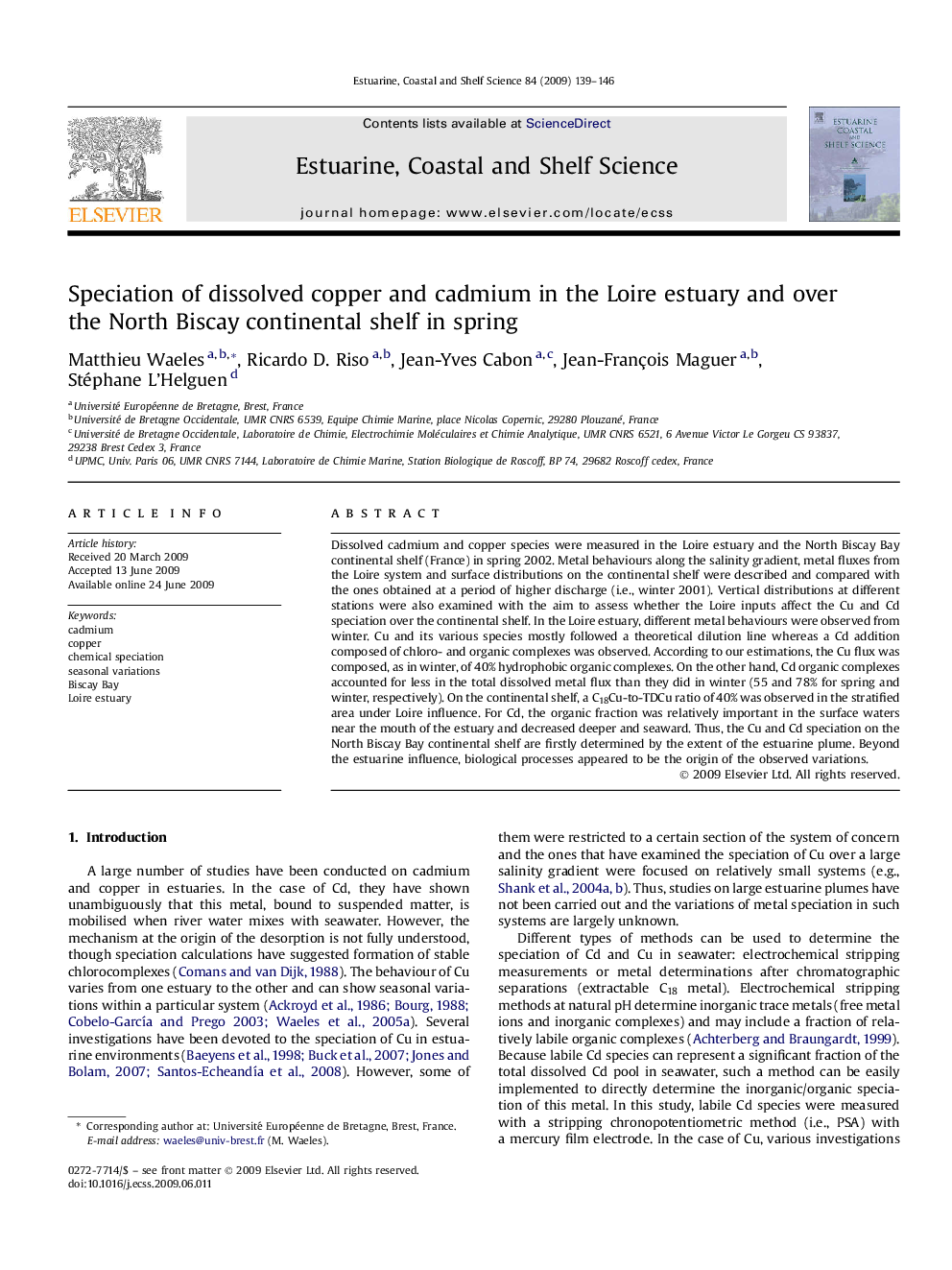| Article ID | Journal | Published Year | Pages | File Type |
|---|---|---|---|---|
| 4541163 | Estuarine, Coastal and Shelf Science | 2009 | 8 Pages |
Dissolved cadmium and copper species were measured in the Loire estuary and the North Biscay Bay continental shelf (France) in spring 2002. Metal behaviours along the salinity gradient, metal fluxes from the Loire system and surface distributions on the continental shelf were described and compared with the ones obtained at a period of higher discharge (i.e., winter 2001). Vertical distributions at different stations were also examined with the aim to assess whether the Loire inputs affect the Cu and Cd speciation over the continental shelf. In the Loire estuary, different metal behaviours were observed from winter. Cu and its various species mostly followed a theoretical dilution line whereas a Cd addition composed of chloro- and organic complexes was observed. According to our estimations, the Cu flux was composed, as in winter, of 40% hydrophobic organic complexes. On the other hand, Cd organic complexes accounted for less in the total dissolved metal flux than they did in winter (55 and 78% for spring and winter, respectively). On the continental shelf, a C18Cu-to-TDCu ratio of 40% was observed in the stratified area under Loire influence. For Cd, the organic fraction was relatively important in the surface waters near the mouth of the estuary and decreased deeper and seaward. Thus, the Cu and Cd speciation on the North Biscay Bay continental shelf are firstly determined by the extent of the estuarine plume. Beyond the estuarine influence, biological processes appeared to be the origin of the observed variations.
